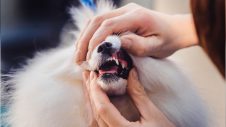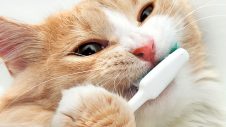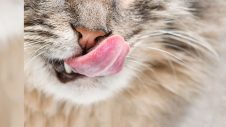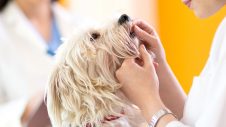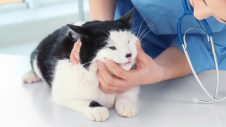What is gum disease?
Gum disease, or periodontal disease is caused by an infection called plaque. Plaque is made up of food particles, saliva and bacteria. It sticks to the tooth surface and if not removed will calcify into tartar (or calculus).
This takes place above and below the gum line and over time can lead to the destruction of the supportive tissues and jawbone, resulting in bad breath and eventual loss of teeth.
How do I know if my pet has gum disease?
More than 85% of dogs and cats over four years old have some form of periodontal disease. There are various signs you can look out for such as
- Bad breath
- Discoloured teeth
- Loose teeth
- Excessive drooling, sometimes blood stained inflamed gums.
- Dropping of food from the mouth when eating, or reluctant to chew or eat at all, especially hard food.
- Pain when handled around the head
- Facial swelling
- Behavioural changes (e.g. lethargy, increased aggression)
- Pawing at the mouth
- Receding gums
What should I do if I suspect my pet has gum disease?
If you think your pet is showing any signs of gum disease it is important that treatment is started immediately before any irreversible damage occurs. At this point it is important to contact one of our healthcare team members immediately to make an appointment with your veterinarian for a dental check-up.
Depending on the condition of your pet’s teeth and gums, we will clean them to remove scale and infection, polish to further remove plaque, and flush to eliminate bacteria. It may also be necessary to remove teeth that are fractured or loose. These procedures will be conducted under a general anaesthetic and in certain cases will be followed by treatment with antibiotics to prevent infection of irritated gums.
Just like your own dentist we use specialized dentistry instruments including ultrasonic and hand scaling equipment throughout this procedure.
What should I do after my pet has had his/her teeth cleaned?
If your pet does have veterinary dental treatment it is important to then provide good homecare to try and prevent or minimise further work being done in the future. Once the healing has occurred, your pet should be fed food that provides ‘dental exercise’ – that is – chewy, fibrous food as outlined earlier.
Finally, make sure you obtain regular check-ups so your veterinarian can detect any cracks, chips, holes, loose teeth, gum ulcers, growths or infections.
What if my pet has a broken tooth?
Teeth may be broken by chewing bones that are too large, by fighting and by accidents. A freshly broken tooth that exposes the nerve is painful and needs immediate attention. These teeth may be saved by doing a special filling within 24-36 hours, otherwise after several days the nerve becomes irreversibly inflamed and then dies. This allows infection to enter the tooth and gain access to the root.
Once infection is present the tooth needs either extracting or root canal filling. Left untreated these teeth can cause abscesses in the jaw bone and be a source of bacterial infection that can spread to the heart, kidneys and other major organs. Contact us immediately if you notice a broken tooth.
What if my pet has a tooth removed?
Where possible we always try to save teeth. It is in our pet’s best interests to have a full set of teeth. However if a tooth is too infected or loose or is going to be a source of future problems then we may need to remove it. Cats and dogs do very well after teeth have been extracted. In extreme cases this can mean all of the teeth.
Remember it is much better to have no tooth and a healthy gum than a retained tooth and ongoing infection.

 Greencross Vets
Greencross Vets 